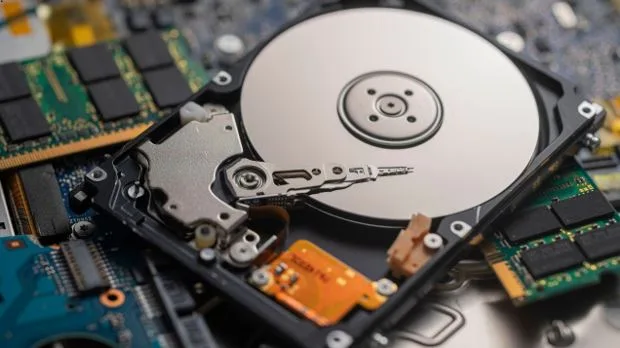Academic honesty in the AI era: using an AI detector the smart way
There have always been two things going on in school: the desire to learn and the temptation to take the easy way out. This tension seems to be growing stronger as time goes on. Artificial intelligence has offered students great tools that can help them stay organized, write, and perform research. But it has also made people think more deeply about what is fair and what is original. The issue is not that technology should be prohibited; rather, individuals must acquire the skills to use it wisely.
With the help of machines, universities all around the world are redefining what it means to be honest. Instead of punishing students for using technology, the goal now is to teach them how to think critically about it. More and more teachers are including digital ethics and authenticity checks in their lessons on how to read and write. These tools aren’t meant to police behavior — they are designed to help people understand the creative process and responsibility behind it.
Rethinking honesty in modern education
It was once clear that plagiarism meant using someone else’s words without giving them credit. But generative AI has blurred the lines. What if a student uses AI to reshape their phrasing? Or seeks guidance to make their writing clearer and more organized? The concern now isn’t just about copying — it’s about honesty, effort, and intellectual ownership.
This is where an AI detector becomes a useful ally. It allows teachers and students to understand how much of a text might be machine-generated and opens the door to discussions about creativity, authorship, and learning integrity. When used responsibly, it doesn’t act as a judge but as a mirror — showing how technology influences our thinking and how students can maintain their authentic voice even when they collaborate with machines. JustDone’s AI detector helps check how authentic your writing is before final submit.
Teachers today must go beyond teaching citation rules; they need to guide students on maintaining digital integrity. Students, in turn, must learn that authenticity is worth more than a perfect score. Writing has never just been about arranging words — it’s about expressing understanding, building connections, and reflecting one’s own mind.
In this evolving classroom, AI tools aren’t the enemy. They are companions in the process of discovery. The challenge is not to avoid them but to use them in ways that enhance learning without replacing human thought.
From AI detection to reflection
If you utilize it right, an AI detector can help you look at yourself. When students check their work, they can see how much of it is written in their own style. It’s not a punishment if a detector says that some parts are definitely AI-generated. Instead, it’s a chance to make them better by changing the tone, rhythm, or word choice.
Some colleges are already telling students to use AI detection before they hand in their papers. It’s not about “catching” mistakes; it’s about being aware. The activity helps students understand the difference between writing by computers and writing by individuals. Over time, they learn to listen for natural language and subtle logic.
This move is in line with the main goal of education: to help pupils think better, not merely write better. When individuals see technology as a friend instead of a threat, they are more open to new ideas and more responsible.
Trust in AI writing
When used effectively, these tools can also aid teachers. Instead of assuming wrongdoing, they might talk about highlighted work with empathy. The detector’s report initiates a conversation. Was the text made to save time, or was AI used to get over a language barrier? It’s not about blaming someone; it’s about figuring out what’s going on and what they want.
When both sides perceive honesty as something they can work on together, the classroom dynamic changes. Teachers change from being gatekeepers to mentors, and students feel more at ease talking about their writing challenges. Technology increases trust in school instead of breaking it down.
An AI detector can aid both parties if it is used appropriately. It helps teachers see things clearly. It helps students get around. It helps both of them remember what education is really about: learning how to think critically and morally in a world that is connected.
The new definition of authenticity
Finding your voice is more important in school these days than memorizing facts. AI can help with writing, editing, and summarizing, but it can’t mimic how a person thinks. Curiosity, hesitation, humor, or emotion are what keep people writing.
Students who know the difference will always be different. They can still utilize AI to help them come up with ideas or arrange their thoughts, but they know that their own understanding gives the writing meaning. When students use technologies that are supposed to check or increase authenticity, they are in charge of their own learning.
As writing gets increasingly digital, we can’t tell if anything is real by how much technology is used; we have to look at how much effort is put into it. Using verification tools effectively helps students strengthen their digital integrity, which is just as important as grammar or research abilities.
Academic honesty with AI tools
There has been a change in academic honesty. It’s not about controlling language anymore; it’s about helping people learn more about themselves. Universities, instructors, and students are all learning how to embrace technology while yet keeping things personal. AI will keep growing better, and so will our ability to use it wisely.
The best way to do it is to be honest, think things out, and work together. There are no rules for being honest; it’s a way of thinking. When technology helps individuals learn better instead of making it easy to bypass it, it works well.
When students and teachers work together with open minds, AI detectors stop being indications of suspicion and start being signs of trust. They remind us that if we let it, technology may help us be more honest.






